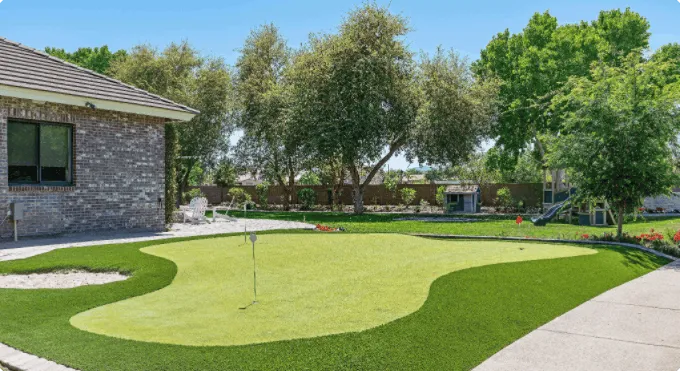
- Afrikaans
- Arabic
- Belarusian
- Bengali
- Czech
- Danish
- Dutch
- English
- Esperanto
- Estonian
- Finnish
- French
- German
- Greek
- Hindi
- Hungarian
- Icelandic
- Indonesian
- irish
- Italian
- Japanese
- kazakh
- Rwandese
- Korean
- Kyrgyz
- Lao
- Latin
- Latvian
- Malay
- Mongolian
- Myanmar
- Norwegian
- Persian
- Polish
- Portuguese
- Romanian
- Russian
- Serbian
- Spanish
- Swedish
- Tagalog
- Tajik
- Thai
- Turkish
- Turkmen
- Ukrainian
- Urdu
- Uighur
- Uzbek
- Vietnamese
plastic lawn grass
Nov . 05, 2024 19:41 Back to list
The Rise of Plastic Lawn Grass A Sustainable Alternative or Environmental Hazard?
In recent years, plastic lawn grass, commonly known as artificial turf, has gained immense popularity among homeowners, schools, and sports facilities across the globe. With its green façade and low maintenance needs, synthetic grass presents an attractive alternative to traditional natural lawns. However, the implications of its widespread use warrant a closer examination, particularly concerning environmental sustainability.
One of the main reasons people are turning to plastic lawn grass is the promise of a lush, manicured lawn without the tedious upkeep. Traditional grass requires regular mowing, watering, fertilization, and pest control. In an era of increasing water scarcity and rising maintenance costs, synthetic turf offers a practical solution. It remains green and vibrant throughout the seasons, regardless of climate or weather conditions. Consequently, homeowners who opt for artificial grass can save both time and money while enjoying a visually appealing outdoor space.
Beyond individual homeowners, sports facilities and playgrounds are also embracing artificial turf. It provides a durable playing surface that can withstand heavy foot traffic, extreme weather conditions, and rigorous use. Many professional sports teams have installed artificial turf in their stadiums, citing improved performance and reduced injury risks. The consistency of a well-laid synthetic surface can enhance athletic performances, making it an attractive option for schools and recreational leagues.
However, the environmental merits of plastic lawn grass are highly contentious. Proponents argue that it conserves water, reducing the need for irrigation in arid regions. Conversely, critics highlight that the production and disposal of synthetic turf pose significant environmental challenges. Most artificial grasses are made from non-biodegradable materials, primarily polyethylene, nylon, or polypropylene, which can take hundreds of years to decompose. As a result, when old turf is replaced, it often ends up in landfills, contributing to the growing issue of plastic waste.
plastic lawn grass

Additionally, the manufacturing process of synthetic grass requires substantial energy and resources. Environmental activists point out that the extraction, processing, and transportation of materials contribute to greenhouse gas emissions. Concern is also raised regarding the potential leaching of chemicals from artificial turf, which can affect soil and water quality. There are ongoing debates about the toxicity of materials used in synthetic grass, particularly concerning the possibility of harmful substances seeping into the environment.
Another aspect of the synthetic turf debate is its impact on local ecosystems. Natural lawns support biodiversity by providing habitats for various insects, birds, and small animals. In contrast, plastic lawns do not support life in the same way and may contribute to the decline of certain species. As urban areas increasingly replace natural landscapes with artificial alternatives, there is a growing concern regarding the loss of biodiversity and the ecological balance.
Nevertheless, the artificial turf industry is evolving. In recent years, manufacturers have begun exploring eco-friendlier options. Innovations in bioplastics and recycled materials are emerging, aiming to reduce the carbon footprint of synthetic grass production. Some companies are creating products from recycled tires, which not only helps manage waste but also enhances the durability of the turf.
As consumers become more environmentally conscious, the demand for sustainable practices in the artificial grass industry is likely to increase. Homeowners and corporations alike are starting to prioritize products that align with their ecological values. The future of plastic lawn grass may well depend on the industry's ability to innovate and adapt to these new demands.
In conclusion, while plastic lawn grass offers undeniable advantages in terms of maintenance and longevity, its environmental impact cannot be overlooked. As the conversation surrounding artificial turf evolves, it is crucial for consumers to weigh the benefits against the ecological costs. The future may hold a solution where artificial grass can coexist with sustainability, striking a balance that benefits both humans and the planet. In the meantime, responsible choices and informed decisions will play a pivotal role in shaping the landscape of our outdoor spaces.
-
The Benefits of Artificial Turf for Indoors
NewsJul.15,2025
-
How Artificial Grass Suppliers Ensure Quality Products
NewsJul.15,2025
-
Artificial Grass and Pets: A Space for Relaxation
NewsJul.08,2025
-
Balcony & Outdoor Decoration with Artificial Grass
NewsJul.08,2025
-
Best Indoor Artificial Grass for Home
NewsJul.07,2025
-
Best Pet Turf for Dogs: Safe & Durable Artificial Grass Options
NewsJul.07,2025
Products categories









